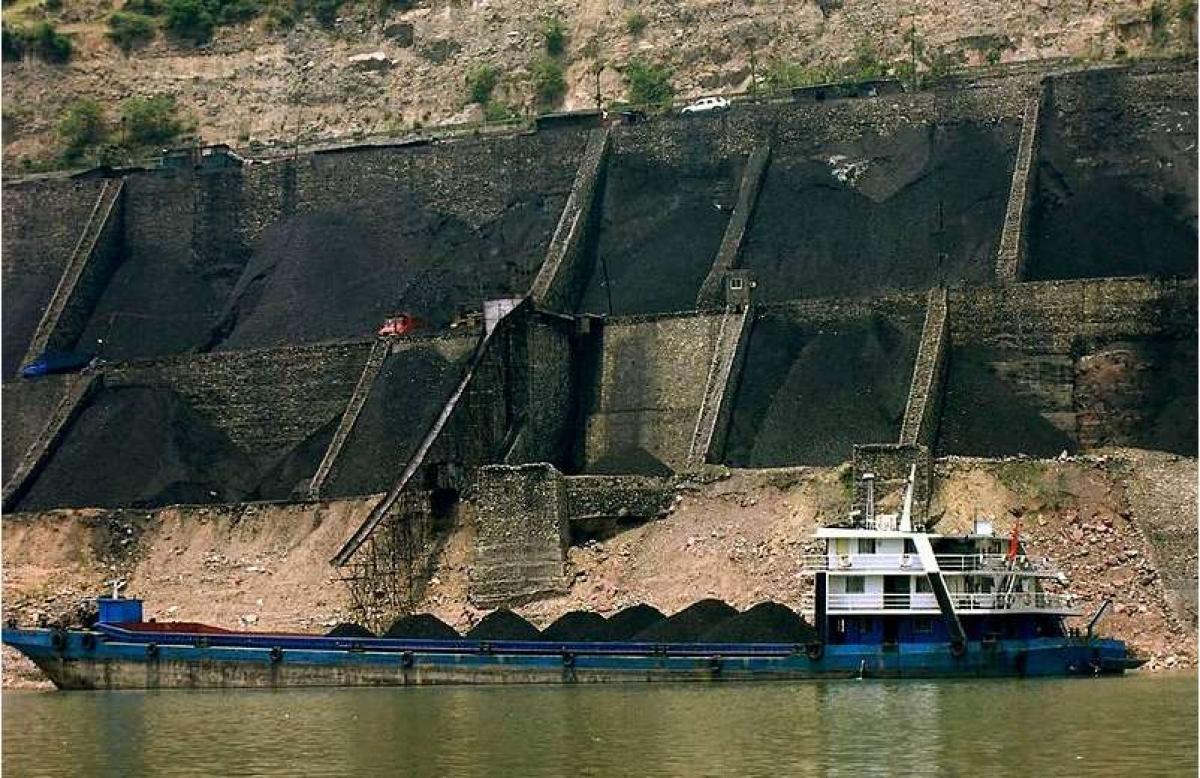I wrote here last week about the demise of Arch Coal. I was reminded of the incompleteness of my treatment there by the commenters on that piece, and I’ve been reminded again by subsequent developments.
More then: in December 2013 Arch made a tender offer for its $600 million of senior notes due in 2016, essentially swapping them out for newly issued notes due in 2019. A half year later along came a wave of alpha-seeking interest in coal in general, and in Arch Coal in particular. Arch was a particular beneficiary because its leverage seemed well under control.
As Sammy Pollack, a regular contributor to Seeking Alpha, wrote in his published analysis at this time, the company’s tender offer had been a “smart move” and the fact that it had no notes coming due soon was a good sign, evidence that it had “a time window for coal prices to improve.”
By the end of 2014, though, that wave had crashed into the sand, and the trend was toward a bearish play on Arch’s debt, and that of similarly situated coal concerns. The plan was to buy up the company’s debt, and swap it for equity in the event of a bankruptcy.
Still, as recently as the start of November 2015, there were still some optimists echoing Pollack with regard to the future of Arch Coal. Trade-Ideas said that the stock was “strong on high relative volume” and reminded us that these circumstances can signal “the start of a new trend on which early investors can capitalize.”
How’s That Working Out
Arch Coal filed in the U.S. bankruptcy court in St. Louis, Missouri, on January 13, proposing a meeting of the creditors on March 10.
One might make again and perhaps with more success than before, the hypothesis that undergirded Pollock’s argument: that coal prices aren’t going to decline to zero. They will find a bottom and they will rebound from it. If that happens any time soon, then equity in Arch Coal, under whatever newer name will denote the successor entity, will prove valuable. That will be too late for the holders of the old equity of course, and the court has yet to determine who will hold the new equity. Still, it is a point worth bearing in mind.
Yet if we aren’t going to try to catch a falling knife, we’re going to need something more definite. The sensible plan is to wait until the knife hits the street, then pick it off, wash it off, and cut one’s self a piece of the pie to be baked by the future profitability of the coal industry.
How will we know when this knife has hit its street?
State of the Union
On a related subject: President Obama gave his final state of the union address on Tuesday, January 12: the day after Arch Coal’s bankruptcy filing. Obama spoke to the conditions of the coal industry in his SOTU address, a brief comment that was buried in with the usual laundry-list stuff of such addresses. He said, "I'm going to push to change the way we manage our oil and coal resources, so that they better reflect the costs they impose on taxpayers and our planet."
This words acquired a more ominous specificity the following Friday, when the Secretary of the Interior, Sally Jewell, announced a moratorium on the leasing of new federal lands for coal mining until further notice. This measure doesn't interfere with the mining of land already under lease. Nor is it clear how long the moratorium on the creation of new leases will last. So: what does it mean?
As a best guess, the most likely result is a pause in leasing until mid-year, and then a new (higher) royalties charge for the lessees.
The Dow Jones US Coal Index shows vividly the extent to which the week that began with the bankruptcy announcement, that continued through the SOTU, and that ended with Jewell's announcement, was an epically lousy week for the coal industry. On the Friday before this week began, the market closed with the DJUSCL index still above 19.00. Monday morning began at 17.79. Things continued downhill from there, and the DJUSCL closed out the week at 12.33. The industry reflected in this index then lost roughly 31% of its value in that week.
Social Responsibility Corner
Arch Coal has often worn a black hat in discussions of “socially responsible investing.” It was not only a coal company (a suspect category from the point of view of much of the SRI industry) but a mountaintop-removing coal company. The worst kind!
In this context, Arch Coal won at least footnote status in Norwegian news back in the spring of 2014, when the legislature of Norway debated a proposal to have that country’s sovereign wealth fund, Government Pension Fund Global, divest from coal companies generally. The fund had only a small investment in coal company equity at the time, totaling about $414 million, or 2.5 billion kroner. Part of that small investment was in Arch Coal.
The divestment proposal failed the first time it was offered, but a revised proposal was enacted into law a year later.
All That Said….
How far has the knife fallen?
- The coal industry in general may not have hit bottom yet. As to the electrical portion of demand, the encroachments of natural gas will certainly continue because no one expects any moratorium on fracking, and the demand for metallurgical coal may remain weak for some time to come. Meanwhile on the supply side … politics will determine much, and the politics of coal is especially volatile now.
- Arch Coal itself may well have hit bottom and be in a position for a post-reorganization rebound that will benefit the next round of equity holders.
- But if that does happen, the benefit will accrue to those who already possessed Arch Coal debt at the time of the bankruptcy filing.




